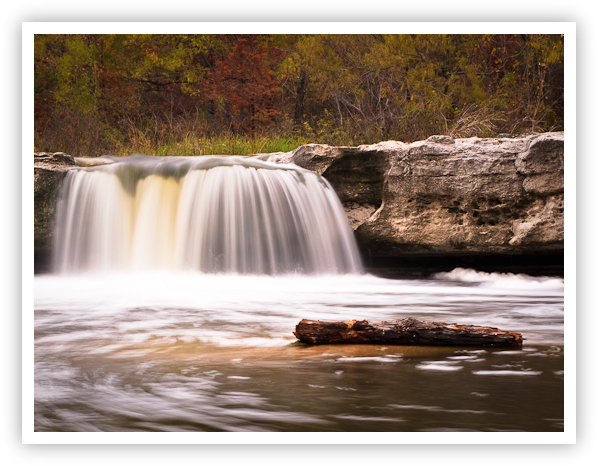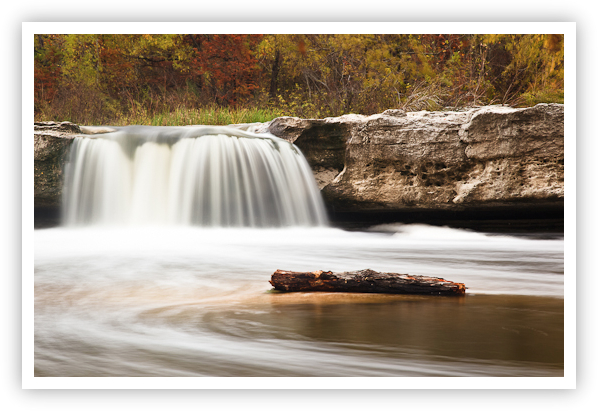One of my favorite subjects to photograph in nature is a waterfall. There is something so dynamic yet serene about water cascading over rocks that I just can’t resist. Perhaps its several years of drought that’s make me a little obsessive about searching out waterfalls in Texas or perhaps it just the technical challenge of capturing such a dynamic scene in static photograph. Whatever the case, waterfalls continue to fascinate me.
Getting a good shot of a waterfalls is fairly simple if you follow a few simple rules:
- Shoot on cloudy or overcast days to cut down on the glare reflected from the water.
- Shoot with a low ISO speed and small aperture (f/16) to provide an exposure greater than 1 second.
- Use a polarizing filter to reduce glare and (if needed) a neutral density filter to obtain a long exposure.
- Shoot from a tripod to eliminate camera shake during the exposure.
- Focus manually and check your depth of field. Running water can fool your camera’s AF system.
Upper McKinney Falls – Austin, Texas
Copyright © 2009 Jeff Lynch Photography
Shot taken with a Canon EOS 5D Mark II set on manual (M) using an EF 24-105mm f/4L IS USM lens tripod-mounted. The exposure was taken at 70mm, f/16 for 10 seconds at ISO 100 using a Singh-Ray Vari-ND-Duo neutral density and warming polarizer filter. All post capture processing was done in Adobe’s Lightroom 3 Beta. Click on the image above for a larger version.












